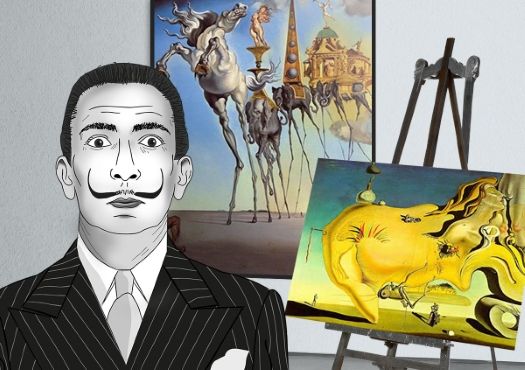Summary of Salvador Dalí
Salvador Dalí is among the most versatile and prolific artists of the 20th century and the most famous Surrealist. Though chiefly remembered for his painterly output, in the course of his long career he successfully turned to sculpture, printmaking, fashion, advertising, writing, and, perhaps most famously, filmmaking in his collaborations with Luis Buñuel and Alfred Hitchcock. Dalí was renowned for his flamboyant personality and role of mischievous provocateur as much as for his undeniable technical virtuosity. In his early use of organic morphology, his work bears the stamp of fellow Spaniards Pablo Picasso and Joan Miró. His paintings also evince a fascination for Classical and Renaissance art, clearly visible through his hyper-realistic style and religious symbolism of his later work.
Accomplishments
- Freudian theory underpins Dalí's attempts at forging a visual language capable of rendering his dreams and hallucinations. These account for some of the iconic and now ubiquitous images through which Dalí achieved tremendous fame during his lifetime and beyond.
- Obsessive themes of eroticism, death, and decay permeate Dalí's work, reflecting his familiarity with and synthesis of the psychoanalytical theories of his time. Drawing on blatantly autobiographical material and childhood memories, Dalí's work is rife with often ready-interpreted symbolism, ranging from fetishes and animal imagery to religious symbols.
- Dalí subscribed to Surrealist André Breton's theory of automatism, but ultimately opted for his own self-created system of tapping the unconscious termed "paranoiac critical," a state in which one could simulate delusion while maintaining one's sanity. Paradoxically defined by Dalí himself as a form of "irrational knowledge," this method was applied by his contemporaries, mostly Surrealists, to varied media, ranging from cinema to poetry to fashion.
The Life of Salvador Dalí
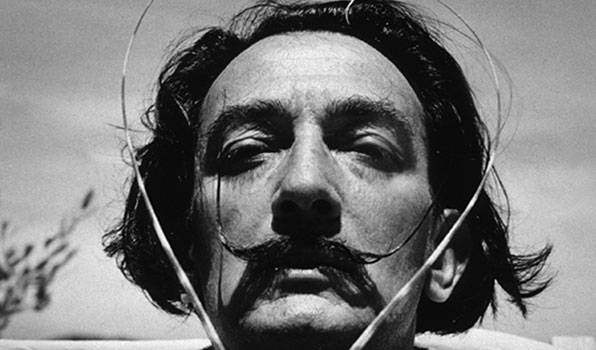
The self-assured Dalí famously retorted, "I myself am Surrealism." After, members of the Surrealists would have a tumultuous relationship with him, sometimes honoring the artist, and other times disassociating themselves from him.
Important Art by Salvador Dalí
Un Chien Andalou
By the age of 24 Dalí had acquired an art education, been inspired by Picasso to practice his own interpretation of Cubism, and was beginning to utilize Surrealist concepts in his paintings. It was at this point that he joined film director Luis Buñuel to create something truly new - a film that radically veered from narrative tradition with its dream logic, non-sequential scenes, lack of plot and nod to Freudian free association.
Un Chien Andalou recreates an ethereal setting in which images are presented in montaged clips in order to jostle reality and tap the unconscious, shocking the viewer awake. For example, in this clip we find a glaring cow's eye in a woman's eye socket soliciting feelings of discomfort. In the scene that follows, a razor blade slashes said eye in extreme close-up.
The film turned out to be a sensation and gained Dalí entrance to the most creative group of Parisian artists at the time, The Surrealists. In fact, it's become known as the first Surrealist film yet remains paramount in the canon of experimental film to this day.
35mm Film - The Museum of Modern Art, New York
Great Masturbator
Central to the piece is a large distorted human face looking down upon a landscape, a familiar rocky shoreline scene reminiscent of Dalí's home in Catalonia. A nude female figure representing Dalí's new-at-the-time muse Gala rises from the head, symbolic of the type of fantasy a man would conjure while engaged in the practice suggested by the title. Her mouth near a male's crotch suggests impending fellatio while he seems to be literally "cut" at the knees from which he bleeds, a sign of a stifled sexuality. Other motifs in the painting include a grasshopper - a consistent beacon for sexual anxiety in Dalí's work, ants - elusion to decay and death, and an egg - representing fertility.
The painting may represent Dalí's severely conflicted attitudes towards sexual intercourse and his lifelong phobia of female genitalia right at the cross section of meeting and falling in love with Gala. When he was a young boy, Dalí's father exposed him to a book of explicit photos demonstrating the horrific effects of venereal disease, perpetuating traumatic associations of sex with morbidity and rot in his mind. It is said that Dalí was a virgin when he met Gala and that he later encouraged his wife to have affairs to satisfy her sexual desires. Later in life when his paintings turned to religious and philosophical themes, Dalí would tout chastity as a door to spirituality. This piece has been compared to Bosch's The Garden of Earthly Delights.
Oil on canvas - Museo Nacional Centro de Arte Reina Sofía, Madrid, Spain
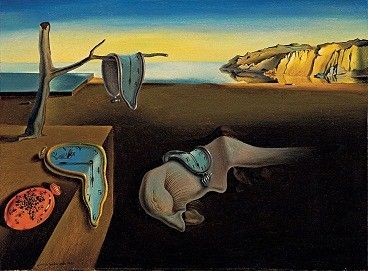
The Persistence of Memory
This iconic and much-reproduced painting depicts the fluidity of time as a series of melting watches, their forms described by Dalí as inspired by a surrealist perception of Camembert cheese melting in the sun. The distinction between hard and soft objects highlights Dalí's desire to flip reality lending to his subjects characteristics opposite their usually inherent properties, an un-reality often found in our dreamscapes. They are surrounded by a swarm of ants hungry for the organic processes of putrefaction and decay with which Dalí held unshakable fascination. Because the melting flesh at the painting's center resembles Dalí, we might see this piece as a reflection on the artist's immortality amongst the rocky cliffs of his Catalonian home.
Oil on canvas - The Museum of Modern Art, New York
Archeological Reminiscence of Millet's 'Angelus'
Dalí often recounted a memory of passing laborious hours at school as a child by focusing on a reproduction of the famous 1859 painting by Jean-François Millet The Angelus. In the classical piece, two farmers are depicted saying a devotional prayer moments after hearing a far-off dinner bell signal the end of their workday. In Dalí's homage, two curvaceous rock figures (another nod to the Catalonian landscape) rise at sunset; the one on the left is a female while the one on the right is male. The woman's form suggests the figure of a praying mantis, a species in which the female cannibalizes the male after copulation.
The praying mantis was a predominant theme in Surrealist works signifying the conflicting feelings of attraction and despair within the realm of desire. As The Dalí Museum describes, "In his analysis of the painting's latent meaning, Dalí felt that the female was not only the dominant partner, but also posed a sexual threat to the male..." It can thus be inferred that Dalí saw the The Angelus painting as symbolic of the repression of the male by the female - an overhanging threat to male existence. In a number of works throughout his career, Dalí reused these two forms.
Oil on panel - The Dalí Museum, St. Petersburg, Florida
The Enigma of William Tell
The renowned legend of William Tell is about a man who is forced to put an apple on top of his son's head and to shoot an arrow through it. The story is a modern retelling of the Biblical sacrifice of Isaac by his father Abraham. Dalí takes this age-old tale further yet with a decidedly Freudian bent. Here, the man is holding a baby, and the baby has a lamb chop on its head. In a twist on the theme of paternal assault, the father figure is about to eat the baby, and the birds in the corner await the leftovers. Dalí had a tumultuous relationship with his family, which is hinted at upon canvas in many of his works. This piece is a fine example of how our dreams continually process such persistent dilemmas in our lives through montages of wild symbolism and subconscious representations.
Dalí used a few other tools from his symbolic toolkit in this painting. The extended buttock has a sexualized/phallic connotation. The fact that it is held up by a crutch shows the father's weakness and need for assistance. At the time Dalí made this painting he was virtually disowned by his father for his relationship with Gala who is supposedly represented by the tiny nut and baby right next to the father's giant foot, in peril of being stomped out.
This artwork also served as a bit of turning point in Dalí's relationship with the Surrealist group. The main Surrealists led by André Breton were leftist supporters of Lenin, while Dalí here gave the evil father figure Lenin's face. The Surrealists were highly upset by such depictions and started proceedings to try to kick Dalí out of their group.
Oil on canvas
Soft Construction with Boiled Beans (Premonition of Civil War)
Dalí painted this work just prior to the start of the Spanish Civil War of 1936-1939 and said it was evidence of the prophetic power of his subconscious mind. He depicts the anxiety of the time, visually predicting the violence, horror, and doom many Spaniards felt during General Franco's later rule. Two grossly elongated and exaggerated figures struggle, locked in a tensely gruesome fight where neither seems to be the victor. To quote Dalí, the painting shows "a vast human body breaking out into monstrous excrescences of arms and legs tearing at one another in a delirium of autostrangulation." The boiled bean referenced in the title most likely refers to the simple stew that was eaten by the poverty-ridden citizens living through this difficult time in Spain.
Dalí's composition manages to express his political outrage. He would later continue to paint about politics and war in a series of works on Hitler and his agreement with Lord Chamberlain of Britain. This image also brings to mind Pablo Picasso's masterwork on a similar topic, Guernica (1937).
Oil on canvas - The Philadelphia Museum of Art
Lobster Telephone
Dalí's Lobster Telephone is one of the most famous Surrealist objects ever created. The juxtaposition of two objects that have little to do with each other is a staple of Dada and Surrealist ideas. Here Dalí combines the telephone, an object meant to be held, intimately next to one's ear, with a large sharp-clawed lobster, its genitalia aligned with the mouthpiece. It presents a literal juxtaposition of a freakish underwater creature with a normal machine of daily life in the way of dream pairings, in which we are disconcertedly jarred from our reality and viscerally unnerved by the presence of things that make no sense on a conscious level.
Dalí collector Edward James commissioned Lobster Telephone and had four made for his own house. James also commissioned Mae West's Lips sofa from Dalí, which is simply a very large pair of lips that serve as a couch. The sexual connotations of sitting down on a set of beautiful lips are easily conjured.
Steel, plaster, rubber, resin and paper - Collection of the Tate, United Kingdom
The Mae West Brooch
Dalí's renaissance-man mind was exceptionally creative and prolific and extended into many other fields beyond painting. For example, throughout his career, he designed enough pieces of jewelry to fill a museum. In The Mae West brooch, we find continued Surrealism in the way the teeth are literally pearls, sitting in a slightly plumped leer of a mouth, ever so slightly contorted as to make the viewer uneasy. Most designers in the world of fashion would not get away with such a warped play on perfection. But Dalí claimed that he was inspired by a clichéd phrase: "Poets of the ages, of all lands, write of ruby lips and teeth like pearls," as well as the smile of the brooch's namesake Hollywood star. Interestingly, New York art stars such as Willem de Kooning, Andy Warhol and countless others would go on to create renditions of famous, voluptuous lips in their own work.
Rubys and Pearls in setting - Dalí Jewels Museum, Figueres, Spain
In Voluptas Mors
At first glance at this photograph, the viewer sees a skull, but deeper observation reveals it is actually composed of seven nude female models. Dalí designed the precise sketch for this work and it took the photographer Philippe Halsman over three hours to realize the image. The photograph's title is loosely translated as "Voluptuous Death". Dalí said, "I value death greatly. After eroticism, it's the subject that interests me the most."
The piece is an excellent example of Dalí's many experiments with optical effects and visual perception. Here one can see a skull or the seven nudes, but not both at the same time. The particularities of our individual, visual perception was something Dalí was very interested in because he felt we could find clues about our inner psyches through the different associations artwork evoked. He used these double-image experiments in dozens of works throughout much of his career.
Halsman was an established photographer and photojournalist who holds the record for the largest number of Time magazine covers photographed by any one person. After meeting in 1941, Dalí and Halsman worked together for 37 years, until the end of Halsman's life. Their cooperation also produced the famous photograph Dalí Atomicus (1948), and the book Dalí's Mustache (1954), which featured 28 different photographs of the artist's iconic facial hair.
Gelatin silver print
Young Virgin Auto-Sodomized by the Horns of Her Own Chastity
This painting documents Dalí's interest in exaggerating the representation of the female form and his use of abstracted backgrounds. The main force within the painting is clearly its sexual allusion: the rhinoceros horns, commonly used by Dalí, in this case are overtly phallic, both components of the central buttock and disparate images threatening to penetrate it. The painting's title offers a direct clue about the aggressively sexual tone of the work. Art history professor Elliot King was quoted in Dawn Ades' book Dalí as saying, "as the horns simultaneously comprise and threaten to sodomize the callipygian figure, she is effectively (auto) sodomized by her own constitution." The painting therefore reinforces Dalí's conflicting views toward women as mysterious objects of power, seduction, and fear.
Dalí's preoccupation with the phallus was a central theme throughout his career, though the degrees to which his works were aggressive or passive differed period to period. This work, not so surprisingly, was owned by Hugh Heffner and hung in the entryway to the Playboy Mansion for a number of years before being sold in 2003.
Oil on canvas - Private Collection
Crucifixion (Corpus Hypercubus)
Dalí is said to have been a rather poor student in his early years, especially in mathematics. But as the first nuclear warheads exploded in Japan, Dalí became very passionate about atomic theory and related topics. This new interest coincided with a change in his artistic style, leading him back to the realm of classical techniques. The result were paintings that combined his earlier passions for Catholicism and Catalan culture with his new discoveries in math and science - he called this new art theory in his oeuvre "nuclear mysticism."
Dalí became especially interested in representing the fourth dimension as can be seen in this work. We see the depiction of the familiar Crucifixion, but instead of painting a regular cross, Dalí uses a mathematical shape called the tesseract (also known as a hupercube). This tesseract is a representation of a four-dimensional cube, in a three-dimensional space, a rather advanced spatial concept. In fact, Dalí worked with Professor Thomas Banchoff of Brown University Mathematics for many years later in his career to solidify his knowledge.
Interestingly, Dalí combined his interest in spatial mathematics with a growing personal struggle with religion. In later years, he expressed his feelings about Catholicism in this way: "I believe in God but I have no faith. Mathematics and science have indisputably proved that God must exist, but I don't believe it." With paintings such as Crucifixion, Dalí explores combing these two in one devotional representation. In fact, his painting Christ of Saint John of the Cross (1951) similarly deals with divine mathematics and is considered by many to be the greatest religious painting of the 20th century.
Oil on canvas - The Metropolitan Museum of Art, New York
Biography of Salvador Dalí
Childhood
Dalí was born in Figueres, a small town outside Barcelona, to a prosperous middle-class family. The family suffered greatly before the artist's birth, because their first son (also named Salvador) died quickly. The young artist was often told that he is the reincarnation of his dead brother - an idea that surely planted various ideas in the impressionable child. His larger-than-life persona blossomed early alongside his interest in art. He is claimed to have manifested random, hysterical, rage-filled outbursts toward his family and playmates.
From a very young age, Dalí found much inspiration in the surrounding Catalan environs of his childhood and many of its landscapes would become recurring motifs in his later key paintings. His lawyer father and his mother greatly nurtured his early interest in art. He had his first drawing lessons at age 10 and in his late teens was enrolled at the Madrid School of Fine Arts, where he experimented with Impressionist and Pointillist styles. When he was a mere 16, Dalí lost his mother to breast cancer, which was according to him, "the greatest blow I had experienced in my life." When he was 19, his father hosted a solo exhibition of the young artist's technically exquisite charcoal drawings in the family home.
Early Training
In 1922 Dalí enrolled at the Special Painting, Sculpture and Engraving School of San Fernando in Madrid, where he lived at the Residencia de Estudiantes. Dalí fully came of age there and started to confidently inhabit his flamboyant and provocative persona. His eccentricity was notorious, and originally more renowned than his artwork. He kept his hair long and dressed in the style of English aesthetes from the 19th century, complete with knee-length britches that earned him the title of a dandy. Artistically, he experimented with many different styles at the time, dabbling in whatever piqued his ravenous curiosity. He fell in with, and became close to, a group of leading artistic personalities that included filmmaker Luis Buñuel and poet Federico García Lorca. The residence itself was very progressive and exposed Dalí to the most important minds of the time such as Le Corbusier, Einstein, Calder and Stravinsky. Ultimately though, Dalí was expelled from the academy in 1926 for insulting one of his professors during his final examination before graduation.
Following his dismissal from school, Dalí went idle for a number of months. He then took a life-changing trip to Paris. He visited Pablo Picasso in his studio and found inspiration in what the Cubists were doing. He became greatly interested in Futurist attempts to recreate motion and show objects from simultaneous, multiple angles. He began studying the psychoanalytic concepts of Freud as well as metaphysical painters like Giorgio de Chirico and Surrealists like Joan Miró, and consequently began using psychoanalytic methods of mining the subconscious to generate imagery. Over the course of the next year, Dalí would explore these concepts while working to consider a means of dramatically reinterpreting reality and altering perception. His first serious work of this style was Apparatus and Hand (1927), which contained the symbolic imagery and dreamlike landscape that would become Dalí's inimitable painting signature.
Mature Period
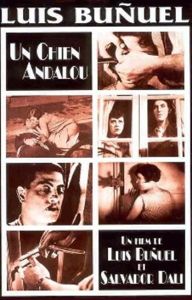
In 1928, Dalí partnered with the filmmaker Luis Buñuel on Un Chien Andalou (An Andalusian Dog), a filmic meditation on abject obsessions and irrational imagery. The film's subject matter was so sexually and politically shocking that Dalí became infamous, causing quite a stir with the Parisian Surrealists. The Surrealists considered recruiting Dalí into their circle and, in 1929, sent Paul Eluard and his wife Gala, along with René Magritte and his wife Georgette, to visit Dalí in Cadaques. This was the first time Dalí and Gala would meet and shortly after the two began having an affair which eventually resulted in her divorce from Eluard. Gala, born in Russia as Elena Dmitrievna Diakona, became Dalí's lifelong, constant, and most important muse, as well as being his future wife, his greatest passion, and his business manager. Soon after this original meeting, Dalí moved to Paris, and was invited by André Breton to join the Surrealists.
Dalí ascribed to Breton's theory of automatism, in which an artist stifles conscious control over the creative process by allowing the unconscious mind and intuition to guide the work. Yet in the early 1930s, Dalí took this concept a step further by creating his own Paranoic Critical Method, in which an artist could tap into their subconscious through systematic irrational thought and a self-induced paranoid state. After emerging from a paranoid state, Dalí would create "hand-painted dream photographs" from what he had witnessed, oftentimes culminating in works of vastly unrelated yet realistically painted objects (which were sometimes intensified by techniques of optical illusion). He believed that viewers would find intuitive connection with his work because the subconscious language was universal, and that, "it speaks with the vocabulary of the great vital constants, sexual instinct, feeling of death, physical notion of the enigma of space - these vital constants are universally echoed in every human." He would use this method his entire life, most famously seen in paintings such as The Persistence of Memory (1931) and Soft Construction with Boiled Beans (Premonition of Civil War) (1936).
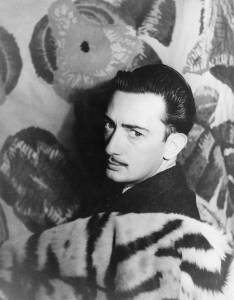
For the next several years, Dalí's paintings were notably illustrative of his theories about the psychological state of paranoia and its importance as subject matter. He painted bodies, bones, and symbolic objects that reflected sexualized fears of father figures and impotence, as well as symbols that referred to the anxiousness over the passing of time. Many of Dalí's most famous paintings are from this highly creative period.
While his career was on the rise, Dalí's personal life was undergoing change. Although he was both inspired and besotted by Gala, his father was less than enthused at this relationship with a woman ten years his son's senior. His early encouragement for his son's artistic development was waning as Dalí moved more toward the avant-garde. The final straw came when Dalí was quoted by a Barcelona newspaper as saying, "sometimes, I spit for fun on my mother's portrait." The elder Dalí expelled his son from the family home at the end of 1929.
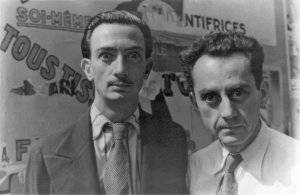
The politics of war were at the forefront of Surrealist debates and in 1934 Breton removed Dalí from the Surrealist group due to their differing views on communism, fascism, and General Franco. Responding to this expulsion Dalí famously retorted, "I myself am Surrealism." For many years Breton, and some members of the Surrealists, would have a tumultuous relationship with Dalí, sometimes honoring the artist, and other times disassociating themselves from him. And yet other artists connected to Surrealism befriended Dalí and continued to be close with him throughout the years.
In the following years, Dalí travelled widely, and practiced more traditional painting styles that drew on his love of canonized painters like Gustave Courbet and Jan Vermeer, though his emotionally charged themes and subject matter remained as strange as ever. His fame had grown so widely that he was in demand by the rich, well known, and fashionable. In 1938, Coco Chanel invited Dalí to her home, "La Pausa," on the French Riviera where he painted extensively, creating work later exhibited at the Julien Levy Gallery in New York. But undoubtedly, Dalí's true magic moment came that year when he met his hero, Sigmund Freud. After painting his portrait, Dalí was thrilled to learn that Freud had said, "So far, I was led to consider completely insane the Surrealists, who I think I had been adopted as the patron saint. This young Spaniard with his candid, fanatical eyes and his undeniable technical mastery has made me change my mind."
Around this time Dalí also met a major patron, the wealthy British poet Sir Edward James. James not only purchased Dalí's work, but also supported him financially for two years and collaborated on some of Dalí's most famous pieces including The Lobster Phone (1936) and Mae West Lips Sofa (1937) - both of which decorated James' house in Sussex, England.
Dalí and Gala in the US
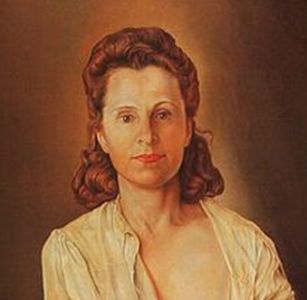
Dalí had a presence in the United States even before his first visit to the country. The art dealer Julien Levy organized an exhibition of Dalí's work in New York in 1934, that included The Persistence of Memory. The exhibition was incredibly well-received, turning Dalí into a sensation. He first visited the US in the mid-1930s. And he continued to ruffle the waters wherever he went, oftentimes staging deliberate public appearances and interactions, which were in essence early examples of his love for performance. On one such occasion, he and Gala went to a masquerade ball in New York dressed as the Lindbergh baby and his kidnapper. This caused such a scandal that Dalí actually apologized in the press, an action that prompted contempt from the Surrealists in Paris.
Dalí also participated in other Surrealist events while in New York. He was featured in the first exhibition on Fantastic Art, Dada, Surrealism at the Museum of Modern Art. He also made quite a scene at a showing of Joseph Cornell's Surrealist films when he knocked over the projector, famously fuming "my idea for a film is exactly that, and I was going to propose it to someone who would pay to have it made. I never wrote it down or told anyone, but it is as if he had stolen it."
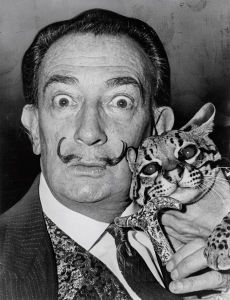
After the devastation of the Second World War in Europe, Dalí and Gala returned to the United States in 1940. They would remain for eight years, splitting time between New York and California. During this period, Dalí became highly productive, expanding his practice beyond the visual arts into a wide array of other creative interests. He designed jewelry, clothing, furniture, sets for plays and ballets, and even display windows for retail stores. Dalí's eccentric personality often took center stage in many of these pursuits - for example, while being consigned by the department store Bonwit Teller, Dalí was so angered by changes to his artistic vision that he shoved a bathtub through the window display case.
Dalí (and Gala) wanted to become stars and make a large amount of money so Hollywood was a natural destination for the couple. They did not succeed in their quest for cinematic celebrity, but Dalí was asked by the famous director Alfred Hitchcock to create the dream sequence in his thriller Spellbound (1945). In addition, Walt Disney cooperated with Dalí to create the animated cartoon Destino, but the project was suspended due to financial difficulties following World War II and not actually completed until much later (2003).
Return to Port Lligat
After being ousted from the family home in 1929, Dalí purchased a small seaside house in the nearby fishing village of Port Lligat. Eventually he bought up all of the houses around it, transforming his property into a grand villa. Gala and Dalí moved back to Port Lligat in 1948, making it their home base for the next three decades.
Dalí's art continued to evolve. Besides exploring different artistic mediums, Dalí also started using optical illusions, negative space, visual puns, and trompe l'oeil in his work. Starting in 1948 he would make approximately one monumental painting per year - his "Dalí Masterworks" - that were at least five feet long in one or both directions and creatively occupied Dalí for at least a year. His studio had a special slot built into the floor that would allow the huge canvases to be raised and lowered as he worked on them. He painted at least 18 such works between 1948 and 1970.
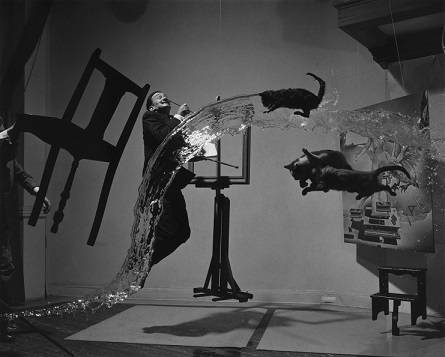
In the 1940s and 1950s, Dalí's paintings focused primarily on religious themes reflecting his abiding interest in the supernatural. He famously claimed, "I am a carnivorous fish swimming in two waters, the cold water of art and the hot water of science." He aimed to portray space as a subjective reality, which may be why many of his paintings from this period show objects and figures at extremely foreshortened angles. He continued employing his "paranoiac-critical" method, which entailed working long, arduous hours in the studio and expressing his dreams directly on canvas in manic bouts of energy.
Dalí became quite reclusive while encompassed in his studio making paintings. Yet, he continued to step out to orchestrate stunts, or what he called "manifestations" that were just as outrageous as before. Designed to provoke, these performance-based interactions reminded the public that Dalí's inner imp was alive and well. In one, Dalí sipped from a swan's egg as ants emerged from inside its shell; in another he drove around in a car filled to the roof with cauliflower. When his book, The World of Salvador Dalí, was published in 1962 he signed autographed copies at a bookstore in Manhattan while hooked up to a monitor recording his blood pressure and brain waves. Customers left with a signed copy and a printout of Dalí's vitals. He also made a number of commercials for televisions and other media for companies such as Lanvin Chocolates, Alka-Seltzer, and Braniff Airlines - casting his star power far and wide.
In the 1960s when Dalí came to New York City, he always stayed at the St. Regis hotel on 5th Avenue. He made the hotel bar practically his living room, where parties raged throughout his stay. At the time Dalí had an entourage of strange and charismatic characters with whom he spent his time. Andy Warhol, another eccentric collector of outrageously wacky humans, also spent time with Dalí at the St. Regis. In one legendary story, Warhol brought a silkscreen painting as a gift to Dalí, but the older artist threw it on the ground at the hotel and proceeded to pee on it. Rather than get offended, Warhol supposedly loved the whole episode. The group that Warhol later put together at The Factory was considered a modern evocation of the setting Dalí produced earlier.
Late Period and Death
The last two decades of Dalí's life would be the most difficult and psychologically arduous. In 1968 he bought a castle in Pubol for Gala and in 1971 she began staying there for weeks at a time, on her own, forbidding Dalí from visiting without her permission. Her retreats gave Dalí a fear of abandonment and caused him to spiral into depression. Gala inflicted permanent damage on Dalí after it came to light that, in her senility, she had marred his health by dosing him with non-prescribed medication. The physical damage that Gala wrought on Dalí hindered his art-making capacity until his death. After her death in 1982, Dalí experienced a further bout of depression and is believed to have attempted suicide. He also moved into the castle in Pubol, the site of her death.
One of Dalí's most important achievements during this rough time was the creation of The Dalí Theatre-Museum in Figueres. Rather than donating a single work to the city, Dalí said, "Where, if not in my own town, should the most extravagant and solid of my work endure, where if not here? The Municipal Theatre, or what remained of it, struck me as very appropriate." In preparation for the museum's opening in 1974 Dalí worked tirelessly to design the building and put together the permanent collection that would serve as his legacy.
On January 23, 1989, Dalí died of heart failure while listening to his favorite record, Tristan and Isolde. He is buried beneath the museum that he built in Figueres. His final resting place is three blocks away from the house that he was born in and across the street from the Sant Pere church where he was baptized and had his first communion.
The Legacy of Salvador Dalí
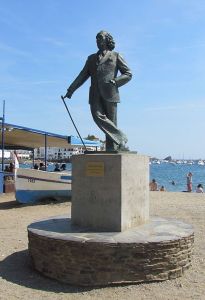
Dalí epitomized the idea that life is the greatest form of art and he mined his with such relentless passion, purity of mission and diehard commitment to exploring and honing his various interests and crafts that it is impossible to ignore his groundbreaking impact on the art world.
His desire to continually and unapologetically turn the internal to the outside resulted in a body of work that not only evolved the concepts of Surrealism and psychoanalysis on a worldwide visual platform but also modeled permission for people to embrace their selves in all our human glory, warts and all. By showing us visual representations of his dreams and inner world laid bare, through exquisite draftsmanship and master painting techniques, Dalí opened a realm of possibilities for artists looking to inject the personal, the mysterious and the emotional into their work. In post-war New York, these concepts were incorporated and transformed by Abstract Expressionists who used Surrealist techniques of automatism to express the subconscious through art, only now through gesture and color. Dalí's use of wildly juxtaposing found objects to create sculpture helped shake the medium from its more traditional bones, opening the door for great Assemblage artists such as Joseph Cornell. Today, we can still see Dalí's influence on artists painting in Surrealist styles, others in the contemporary visionary arts spheres and all over the digital art and illustration spectrums.
Dalí's physical character in the world, eccentric and enigmatic, paved the way for artists to think of themselves as brands. He showed that there was no separation between Dalí the man and Dalí the work. His use of avant-garde filmmaking, provocative public performance and random, strategic interaction brought his work alive in ways that differed from the painting - instead of the viewer merely looking at a beautiful work that evoked great imagination, they would be "poked" in real life by a manifestation of Dalí's imagination designed to unsettle and conjure reaction. This could later be seen in artists like Yoko Ono. Andy Warhol would go on to concoct his own persona, environment and entourage in much the same way as would countless other 20th-century artists. In today's social-media landscape, artists are almost expected to be visibly and socially just as interesting as their art work.
Dalí also spearheaded the idea that art, artist and artistic ability could cross many mediums and become a viable commodity. His exhaustive endeavors into fields ranging from fine art to fashion to jewelry to retail and theater design positioned him as a prolific businessman as well as creator. Unlike mass merchandising, which is often disdained in the art world, Dalí's hand touched such a variety of products and places, that literally anyone in the world could own a piece of him. Today this practice is so common that we find great architects like Frank Gehry designing special rings and necklaces for Tiffany or innovators like John Baldessari lending his images to skateboard decks.
Influences and Connections

Useful Resources on Salvador Dalí
-
![Salvador Dalí - Masters of the Modern Era]() 659k viewsSalvador Dalí - Masters of the Modern EraOur PickBy British art critic Alastair Sooke
659k viewsSalvador Dalí - Masters of the Modern EraOur PickBy British art critic Alastair Sooke -
![Omnibus BBC - Dalí Biography]() 80k viewsOmnibus BBC - Dalí Biography
80k viewsOmnibus BBC - Dalí Biography
-
![How Artist's See - The Surreal World of Salvador Dalí (part 3 of 5)]() 3k viewsHow Artist's See - The Surreal World of Salvador Dalí (part 3 of 5)Prof Ian Aaronson
3k viewsHow Artist's See - The Surreal World of Salvador Dalí (part 3 of 5)Prof Ian Aaronson -
![Dalí Condensed]() 1k viewsDalí CondensedOur PickA comprehensive 5+ hour lecture series organized by The Dalí Museum
1k viewsDalí CondensedOur PickA comprehensive 5+ hour lecture series organized by The Dalí Museum -
![Dalí and the Fourth Dimension]() 7k viewsDalí and the Fourth DimensionDalí worked with mathematician Professor Thomas Banchoff to depict works about the 4th Dimension
7k viewsDalí and the Fourth DimensionDalí worked with mathematician Professor Thomas Banchoff to depict works about the 4th Dimension -
![Dalí and Paranoia]() Dalí and ParanoiaOur PickBy Peter Tush, Curator of Education at The Dalí Museum
Dalí and ParanoiaOur PickBy Peter Tush, Curator of Education at The Dalí Museum -
![Dalí and Death]() 529 viewsDalí and DeathBy Peter Tush, Curator of Education at The Dalí Museum
529 viewsDalí and DeathBy Peter Tush, Curator of Education at The Dalí Museum -
![Dalí Surrealist Objects]() 240 viewsDalí Surrealist ObjectsSculptures by Dalí and other Surrealists
240 viewsDalí Surrealist ObjectsSculptures by Dalí and other Surrealists -
![Dalí and the Generation of '27]() 481 viewsDalí and the Generation of '27The Dalí Museum Curator Rita Risco discusses Dalí, Lorca, Bunuel and many others
481 viewsDalí and the Generation of '27The Dalí Museum Curator Rita Risco discusses Dalí, Lorca, Bunuel and many others
 Ask The Art Story AI
Ask The Art Story AI